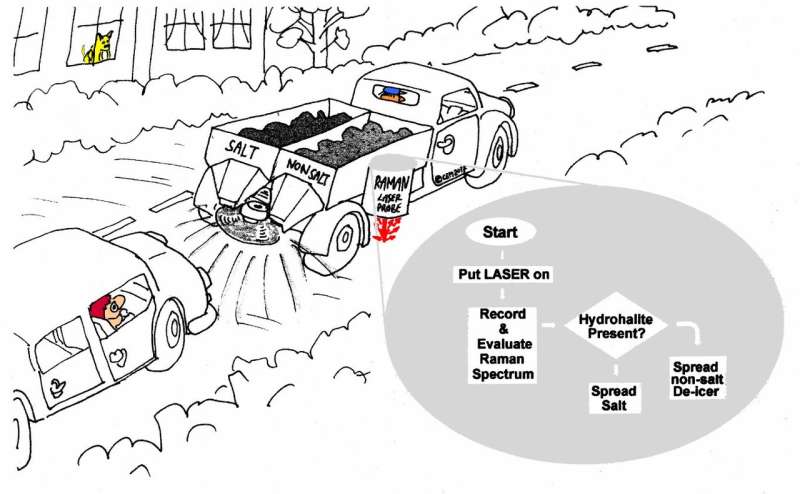New laser technology could reduce accidents on icy roads

Researchers have proposed an innovative new solution to dealing with dangerous icy roads in winter, putting forward an improved, safer method in a paper published today in Applied Spectroscopy Reviews.
Experts have detected a problematic substance known as 'hydrohalite', which forms on icy roads that have already been treated. Hydrohalite is normally left unremoved, as it does not respond to the conventional de-icing method of road surface salting. Once formed, repeated salting will not remove it.
Invisible to the naked eye, hydrohalite can form on both roads and pavements, presenting a serious threat to all road users if left untreated.
To find a solution, researchers recreated the conditions under which the hydrohalite substance forms, which allowed them to test the most efficient way to combat it.
They discovered during experiments that hydrohalite can be easily detected by using Raman instruments, small devices which can identify the structure of a molecule and the presence of a substance.
Since ice and hydrohalite are very different structurally, Raman instruments fitted with lasers could therefore be installed in salt-spreading trucks and snow ploughs, allowing drivers or an automated system to identify the most appropriate method to make the ice melt.
If hydrohalite was found, the driver could then switch to a more appropriate de-icer, such as one mixed with sand and gravel, to ensure the road is completely clear and safer for road users.
Study author Dr Rolf W. Berg, Associate Professor in the Technical University of Denmark's Department of Chemistry, commented: "As the nights get colder, we will again see the widespread use of salt to de-ice roads. However, this method will not work when hydrohalite has been formed, exposing the public to a serious risk of road traffic accidents.
"Equipping salt-spreading trucks with Raman detectors - essentially small boxes which would sit underneath the vehicles - would be a relatively straightforward solution, potentially reducing the number of road traffic accidents and even saving lives."
More information: Applied Spectroscopy Reviews, DOI: 10.1080/05704928.2017.1396540















